Remember the last time you sighed that sweet sigh of relief when it all worked out? Like the time when that alien invasion was fake? Or when the world didn’t end in the year 2000 (or 2012)?
With 2020 throwing everything our way, it’s understandable that many of us are experiencing anxiety. Unfortunately, anxiety can cause panic over certain things that don’t look so bad in hindsight (think toilet roll or baking supplies).
So, we’ve gone back in time to look at seven cases of panic that were – thankfully – anticlimactic. We examine what caused such panic, how the concern was encouraged, and how the public responded to these cases.
As we delve into these events, we recognise that it’s easy to sit on this side of history and wonder how something as simple as, say, dents in a windshield could cause mass hysteria.
As we step back, let’s do so in the shoes of society at the time, and wonder how we may react in these scenarios. We feel such a mindset is crucial, especially since 2020 has provided challenges that may look different for each person across the globe.
More info: comparethemarket.com.au
Halley’s Comet – 1910
As May 1910 approached, astronomers and civilians alike were nervously awaiting the arrival of Halley’s Comet, unsure as to what ramifications its passing could have on the Earth. Many believed that its tail would engulf the world in a poisonous gas, thanks to comments from French astronomer Camille Flammarion. Panic fuelled opportunists tried selling gas masks, anti-comet pills and comet-protecting umbrellas. Thankfully, none of this equipment was needed as the comet passed with ‘no atmospheric disturbances’ and left the general public feeling ‘greatly disappointed’.
The War of the Worlds alien invasion – 1938
On Halloween eve 1938, George Welles & the Mercury Theatre on the Air broadcasted their iteration of H G Wells’ novel The War of the Worlds. The report mimicked a typical radio broadcast, including weather updates and some ballroom music. The fictitious report followed this up with reports of an alien invasion. Despite being set a year in advance and being presented as a fake broadcast from the future, some of the public truly believed that New Jersey was being invaded by aliens. Thus, mass hysteria ensued.
UFO sighting fever – 1947
On 24 June 1947, ‘disc-shaped’ objects were spotted in the air near Mt Rainier in Washington, pointed out by private pilot and businessman Kenneth Arnold. There was heightened uncertainty amongst the public due to the Cold War, and it wasn’t long before 12,618 reports of additional sightings from military and civilian pilots started flooding in. To this day, there is no clear consensus on what those objects actually were. The Air Force claimed that most of the sightings were due to a misinterpretation of known objects, hallucinations, or hoaxes. They explained the various UFOs as being balloons, planets and solar reflections, among others.
Windshield pitting epidemic – 1954
In mid-April 1954, drivers in Seattle were being pulled over by police officers to have their windshield inspected. Around 3,000 cars across 2 days were discovered to have pitted glass – a collection of tiny dings, holes or marks, each about the size of a thumbnail. Some suspected causes were theorised to include vandalism, meteoric dust, radioactive fallout from H-bomb tests, sand flea eggs and cosmic rays. Ultimately, it was believed that drivers were simply looking at their windshields for the first time and that the marks were always there.
The Y2K bug – 1999
While some counted down towards the new millennium with champagne in hand, others had bathtubs filled to the brim with water and battery-powered torches at the ready. There was wide-spread belief that technology dated ‘99’ rather than ‘1999’ would throw industries into chaos, as many people believed computers would reset to 1900 rather than 2000. Common expectations were planes falling from the sky, failing nuclear plants, plummeting elevators and paused pacemakers. This hysteria led to 43% of Americans avoiding plane travel, and many stockpiling food and water. In short, the world didn’t go dark and Y2K became another anticlimactic historic event.
Planetary alignment – 2000
A few short months later, talks of another doomsday event rose in the form of planetary alignment. NASA’s Dr David R Williams explained that on 5 May 2000, the first six planets of our solar system (and Earth’s moon) were going to line up with the sun. It was commonly believed that Earth would experience floods, hurricanes, earthquakes and even a splitting down the middle. Dr Williams said that there would be no impact on Earth, and he was right. Nothing unusual occurred during the alignment.
Doomsday – 2012
The Mayan calendar cycle ended on 21 December 2012, which for some, meant only one thing: the end of the world. It was expected that solar storms would flare, ‘Planet Nibiru’ was headed to Earth, or an asteroid would end all life. NASA stated that Planet Nibiru didn’t exist and that nothing was hurtling towards Earth, but this didn’t calm many fears. It all proved to be a hoax, however, and when life continued as normal the following day, there was a worldwide sigh of relief.
Source credit: https://www.comparethemarket.com.au/health-insurance/mass-hysteria/
482views
Share on FacebookThe y2k bug didn't happen because companies spent millions making sure it wouldn't happen. They did their job and there were only a few issues.
The y2k bug didn't happen because companies spent millions making sure it wouldn't happen. They did their job and there were only a few issues.
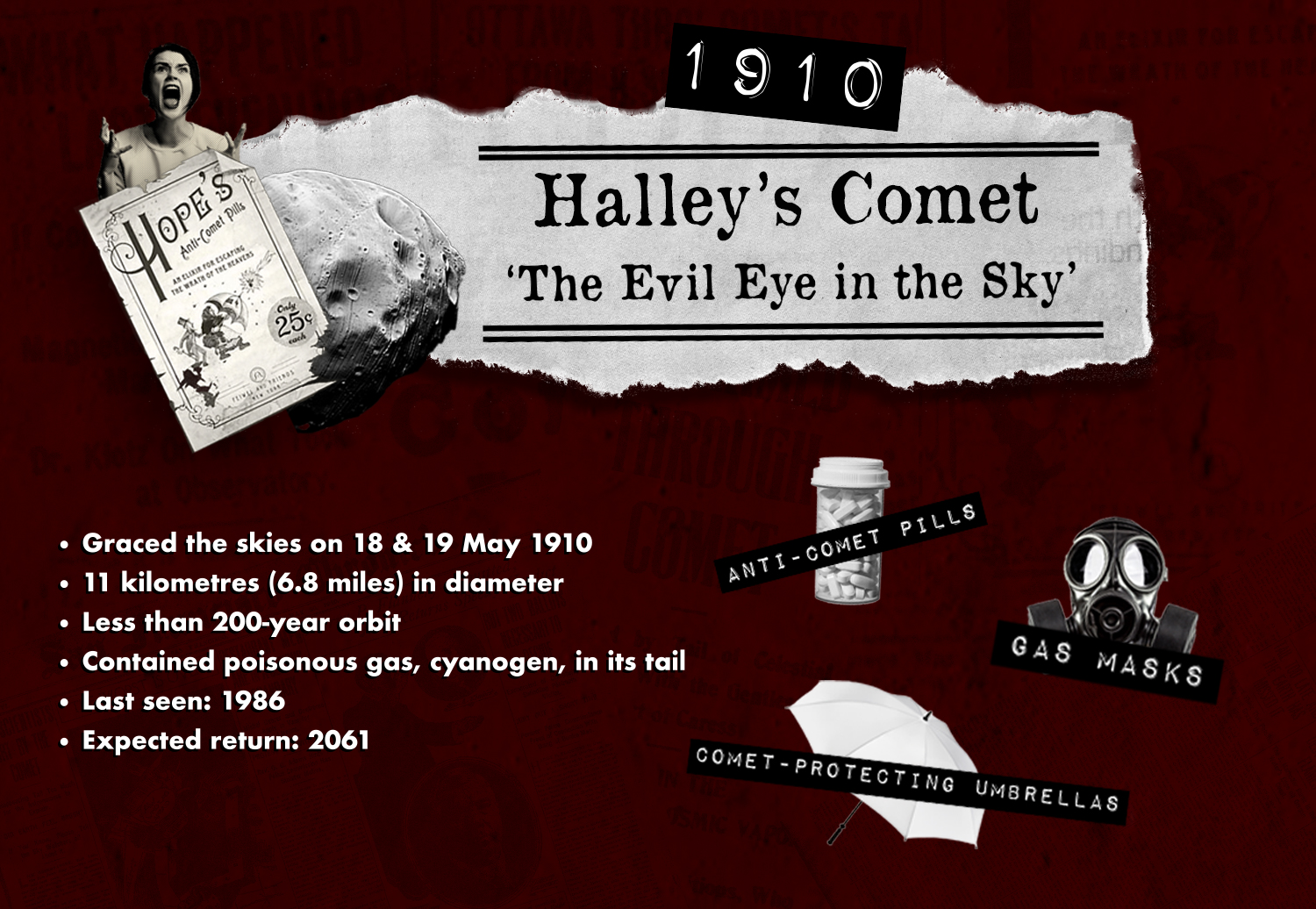
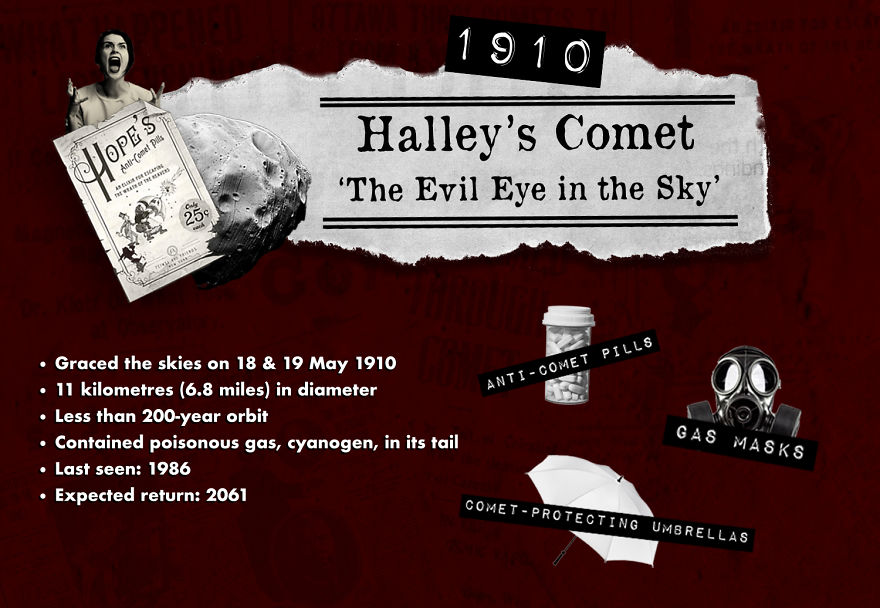
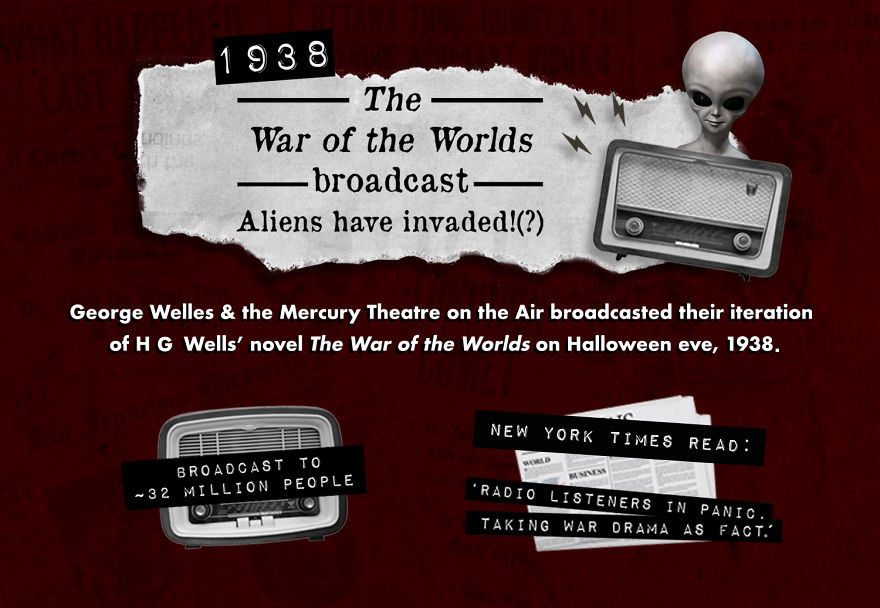
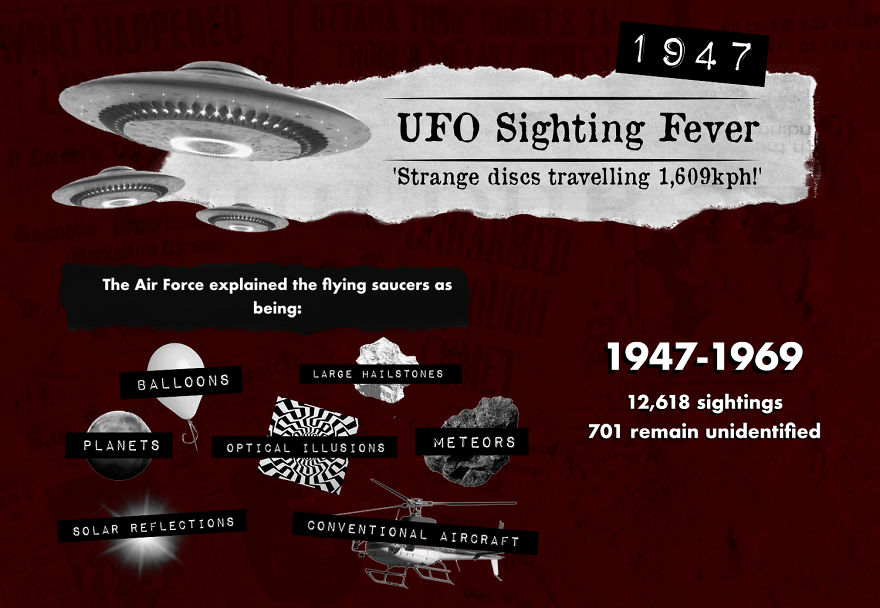
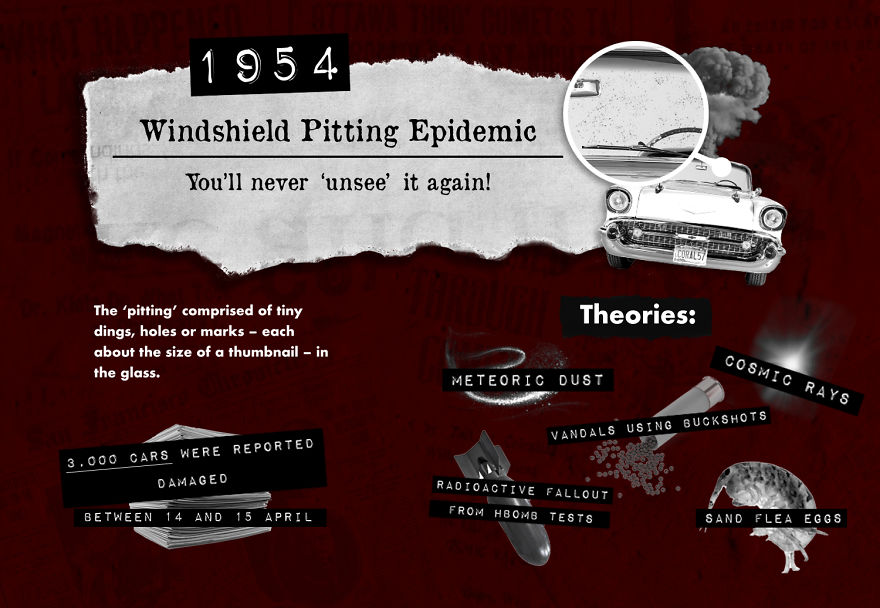
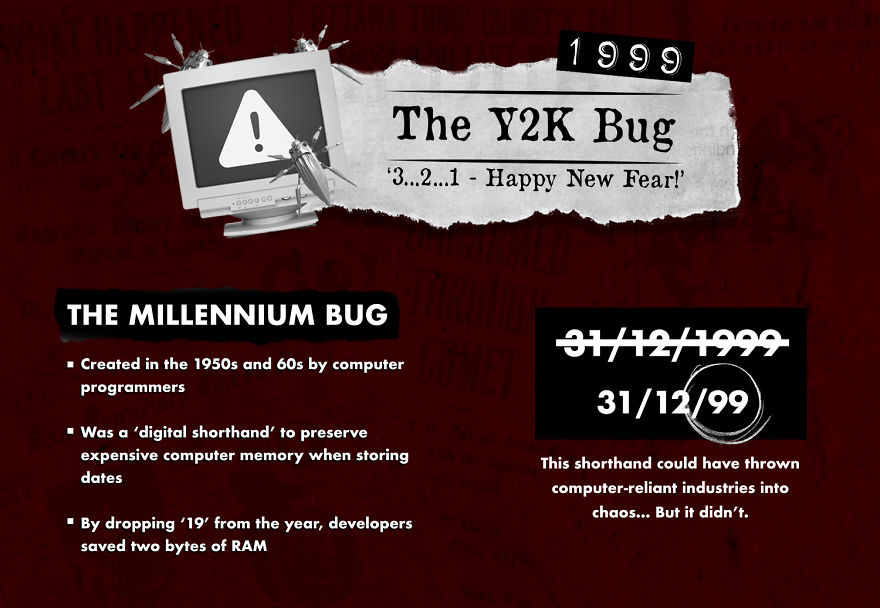
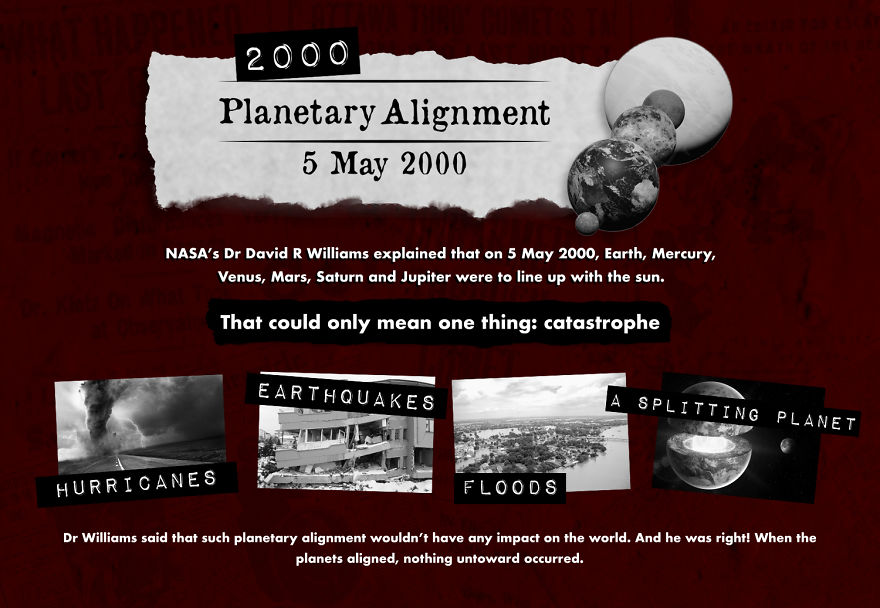
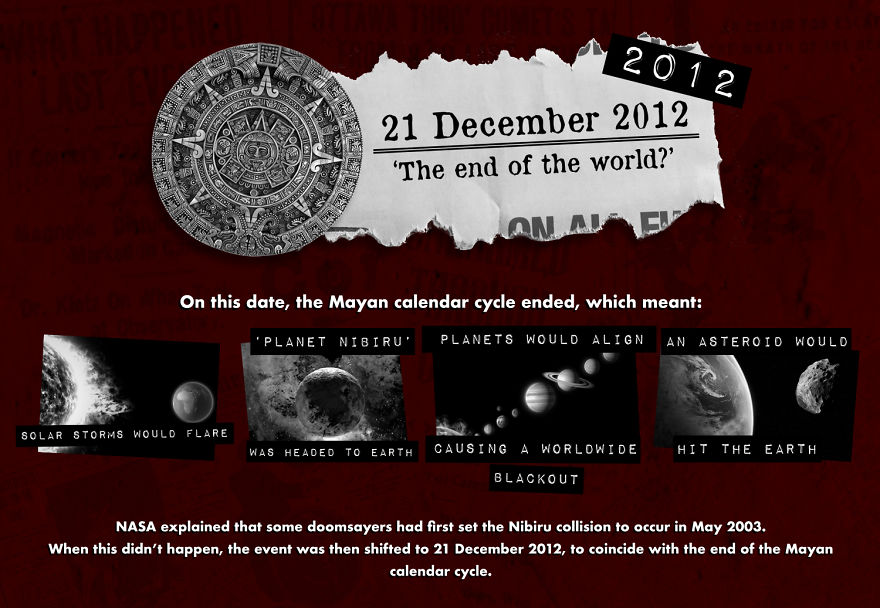




4
3